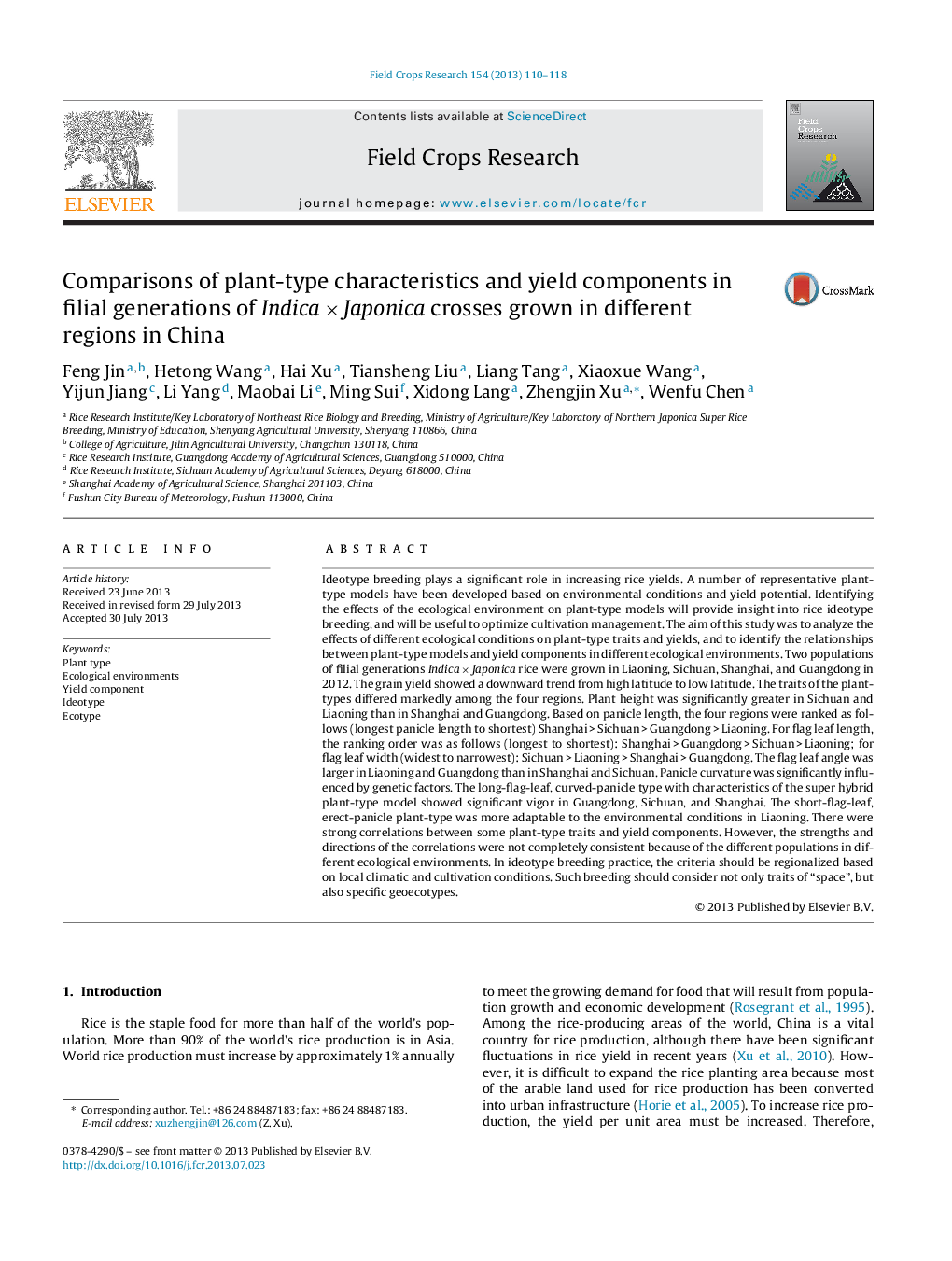| Article ID | Journal | Published Year | Pages | File Type |
|---|---|---|---|---|
| 6375159 | Field Crops Research | 2013 | 9 Pages |
Abstract
Ideotype breeding plays a significant role in increasing rice yields. A number of representative plant-type models have been developed based on environmental conditions and yield potential. Identifying the effects of the ecological environment on plant-type models will provide insight into rice ideotype breeding, and will be useful to optimize cultivation management. The aim of this study was to analyze the effects of different ecological conditions on plant-type traits and yields, and to identify the relationships between plant-type models and yield components in different ecological environments. Two populations of filial generations Indica Ã Japonica rice were grown in Liaoning, Sichuan, Shanghai, and Guangdong in 2012. The grain yield showed a downward trend from high latitude to low latitude. The traits of the plant-types differed markedly among the four regions. Plant height was significantly greater in Sichuan and Liaoning than in Shanghai and Guangdong. Based on panicle length, the four regions were ranked as follows (longest panicle length to shortest) Shanghai > Sichuan > Guangdong > Liaoning. For flag leaf length, the ranking order was as follows (longest to shortest): Shanghai > Guangdong > Sichuan > Liaoning; for flag leaf width (widest to narrowest): Sichuan > Liaoning > Shanghai > Guangdong. The flag leaf angle was larger in Liaoning and Guangdong than in Shanghai and Sichuan. Panicle curvature was significantly influenced by genetic factors. The long-flag-leaf, curved-panicle type with characteristics of the super hybrid plant-type model showed significant vigor in Guangdong, Sichuan, and Shanghai. The short-flag-leaf, erect-panicle plant-type was more adaptable to the environmental conditions in Liaoning. There were strong correlations between some plant-type traits and yield components. However, the strengths and directions of the correlations were not completely consistent because of the different populations in different ecological environments. In ideotype breeding practice, the criteria should be regionalized based on local climatic and cultivation conditions. Such breeding should consider not only traits of “space”, but also specific geoecotypes.
Related Topics
Life Sciences
Agricultural and Biological Sciences
Agronomy and Crop Science
Authors
Feng Jin, Hetong Wang, Hai Xu, Tiansheng Liu, Liang Tang, Xiaoxue Wang, Yijun Jiang, Li Yang, Maobai Li, Ming Sui, Xidong Lang, Zhengjin Xu, Wenfu Chen,
